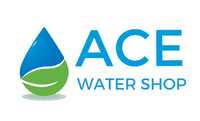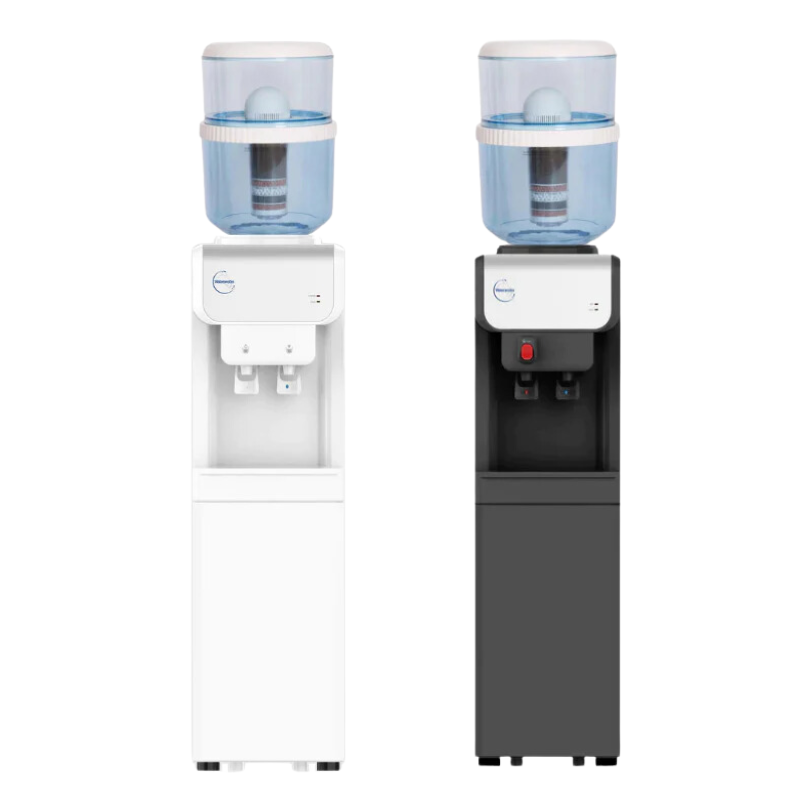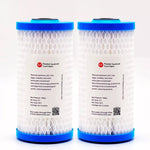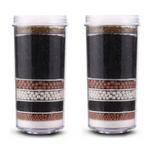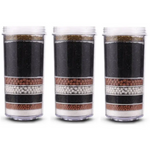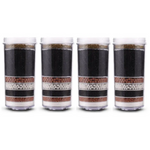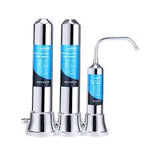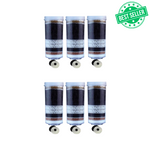You have no items in your shopping cart.
The easiest approach to stay hydrated is to have cold and hot water available at all times. A water dispenser or water cooler is an excellent method to have clean, fresh water at your disposal. These devices use electricity to offer you cold or hot water whenever you need it. But how much electricity (energy) does a water dispenser consume? We'll discuss this in this article and how you can save energy with some simple tips and methods.
HOT AND COLD WATER COOLER ELECTRIC CONSUMPTION
It's a good idea to look for an energy efficiency label on water dispensers when purchasing them. Coldwater devices with that label use less than 0.16 kWh of energy per day, while cold and hot water devices use less than 1.2 kWh per day. The best way to figure out how much electricity your water dispenser uses is to look at the energy label, usually found on the bottom or rear of the device. The electrical ratings, which are stamped in Watts (W) or Volts (V) and Amps (A), can be found (A).
A Water Dispenser Consumes How Much Power (Watts)? The water dispenser typically needs between 0.3 and 1.2 kWh of energy per day to provide cold water and roughly 2.8 kWh of energy per day to offer both cold and hot water. A water dispenser's typical annual power consumption is approximately 912 kWh. It works out to about $118.00 per year. Please remember that the estimated cost may differ depending on the rate in your area.
| Water Dispenser | Cold Water [Watts][Watts] | Monthly Price | |
| 0.26 Gal (1L) of water | 13.6 Watts | 57 Watts | $1.15 |
| 1 Gal (3.7L) of water | 50.3 Watts | 211 Watts | $4.05 |
| Standby Power (24h) | 160 Watts | 726 Watts | $8.45 |
AVERAGE HOT AND COLD WATER COOLER ELECTRIC CONSUMPTION
A typical room temperature of 69.8oF (21oC air temperature), the water dispenser (water cooler) may provide a maximum of 1.55 gallons (5.9 liters) of cold water and 1.84 gallons (7.9 liters) of hot water every hour.
A water dispenser that produces 1.55 gallons (5.9 liters) of cold water uses 80 Wh of electricity. For hard water, this equates to about 13.6 Wh per 0.26 gallon (1 liter). On the other hand, a water dispenser will need to spend roughly 450 Wh of electricity to create 1.84 gallons (7.9 liters) of hot water. It equates to about 57 Wh of electricity for 0.26 gallons (1 liter) of hot water.
The amount of power required by a water dispenser to provide hot and cold water is as follows:
- Hot Water: 0.26 Gallons (1 Liter) = 57 Watts
- Cold Water: 0.26 Gallons (1 Liter) = 13.6 Watts
STANDBY ENERGY CONSUMPTION OF WATER COOLERS
The power used to "dead cycle" the water cooler – that is, no hot or cold water is drawn from the cooler – is referred to as standby energy consumption. The cooler is in a room with a temperature of 24°C, and the electricity required to maintain cold water temperatures of 10°C and hot water temperatures of 80°C (for hot models only) is measured.
The following are the results:
(Cook & Cold) Standby Power Consumption:
- It consumes 160 watt-hours of power per day.
(Hot & Cold) Standby Power Consumption:
- It consumes 762 watt-hours of power per day.
DOES A HOT AND COLD WATER COOLER CONSUME A LOT OF ENERGY?
This model uses 74W (0.074kW) of electricity to chill water compared to our conventional floor-standing bottled water cooler. If your water cooler runs for 8 hours a day, five days a week, that's 160 hours in four weeks, consuming 11.2kWh of electricity.
The identical water cooler model requires 450W (0.45kW) of electricity to generate hot water up to 92oC (hot enough for all those workplace teas).
The water dispenser uses between 0.3 and 1.2 kWh per day to provide cold water. It amounts to about $45.00 per year, depending on the model. The water dispenser uses about 2.8 kWh per day to provide cold and hot water, which works out to about $118.00 per year.
HOT AND COLD WATER COOLER ELECTRIC CONSUMPTION
You can conserve electricity by using a water dispenser (water cooler) with an Energy Star rating. To be energy efficient, your water dispenser must use less than 0.16 kWh per day for cold water and less than 1.2 kWh per day for both cold and hot water (in standby mode).
The amount of electricity required for a water dispenser is also determined by its use (heating, cooling, or both). Another factor is how you frequently use it as well. The device that consumes the most electricity heats the water. The electricity required to heat the water ranges from 400 to 700 watts, with models with reheating requiring up to 1000 watts.
For cooling, less electricity is used. A thermoelectric cooler uses 60 to 80 watts of power. Compressor-cooled water dispensers have a higher capacity and, as a result, use more electricity, consuming up to 100 to 120 watts. Please note that the water dispenser's heating and cooling elements do not operate continuously, so you will not notice a significant increase in temperature.
The water dispenser uses a lot of energy to heat and cool the water at first, but after it reaches the desired temperature, it turns off and goes into standby mode. Heating and cooling sensors are used to accomplish this. Those who believe that using an electric kettle saves money are misinformed. You may save even more electricity by turning off the air conditioner at night.
FACTORS THAT DETERMINE AN ENERGY CONSUMPTION
You can familiarize yourself with several models in stores that differ in look and functionality. When heating or cooling a liquid, the majority of the specimens on display use electricity. The power of the water dispenser while heated is 500 W, and when cooled, it swings between 80 and 120 W, according to standard standards.
Factors that influence energy consumption include:
- Model
- Cooling system
- Installed equipment power
- Ambient temperature
- Installed tank for cooling or heating water Capacity
HOW TO SAVE ON A WATER DISPENSER'S ENERGY CONSUMPTION
The majority of devices operate 24 hours a day, seven days a week. However, this isn't always essential. If the water cooler is at the office or home, it is not required to turn it on at night. You can turn the heating off if you don't need hot water.
There are numerous simple techniques to reduce your water dispenser's electricity consumption dramatically:
- When you are not using the water dispenser during the cold season, please turn it off.
- Outside of business hours and on weekends, turn off the heating and cooling.
- Purchase a water dispenser that you can turn on and off at will.
- Make use of a socket timer.
FINAL THOUGHTS
Every appliance we add to our home may mean addition to our monthly electricity consumption. It will just depend if it's worth it and finding the right choice to save. In this case, we believe that the hot and cold water cooler electric consumption is reasonable and worth it. With the convenience it gives your family, what's a few more pennies to add to your bill, right?
Explore Ace Water Coolers' premium quality water coolers in Australia. It will not hurt your bill, plus you get the quality you deserve.
